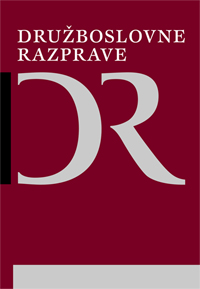Kulturna umestitev Slovencev v Evropi: aplikacija Hofstedejevega modela
Cultural placement of Slovenians in Europe: application of the Hofstede’s model
Author(s): Milan Zver, Tjaša ŽivkoSubject(s): Social Sciences
Published by: Slovensko sociološko društvo (in FDV)
Keywords: cultural orientations; transition; Hofstede’s model of cultural differences; west European culture; (post)modernism
Summary/Abstract: The underestimation of the cultural orientations of people in the research of modern development processes is being increasingly pointed out by known world’s scientists (Berger, Huntington, Inglehart, Hofstede, Höhmann, Apfelthaler). Therefore, the asserted theoretical starting-point of this article is that each social structure has its own compatible cultural system, which identifies and sustains it. We wanted to know whether distinctive differences (and similarities) in cultural systems exist between (and among) European countries and whether the Slovenians in a cultural sense are prepared enough for successful introduction of a (standardized) modern social structure. On basis of the existing international public opinion database and by exploring Hofstede’s model for cluster analysis approach, we have emprically compared Slovene cultural orientations with cultural orientations of the selected European countries. Results lead us to the conclusion the Slovene cultural identity card is a mix of pre-modern (the leftover of the communism on one side and the traditional Catholicism on the other), prevailing modern, as well as post-modern cultural orientations. This pattern of orientations places Slovenians - despite the obvious differences - in the so-called broad circle of western-European culture, able to manage common European cultural standards, what permanently ensures the stability of recently introduced democratic structures within the country.
Journal: Družboslovne razprave
- Issue Year: 20/2004
- Issue No: 045
- Page Range: 59-77
- Page Count: 19
- Language: Slovenian

